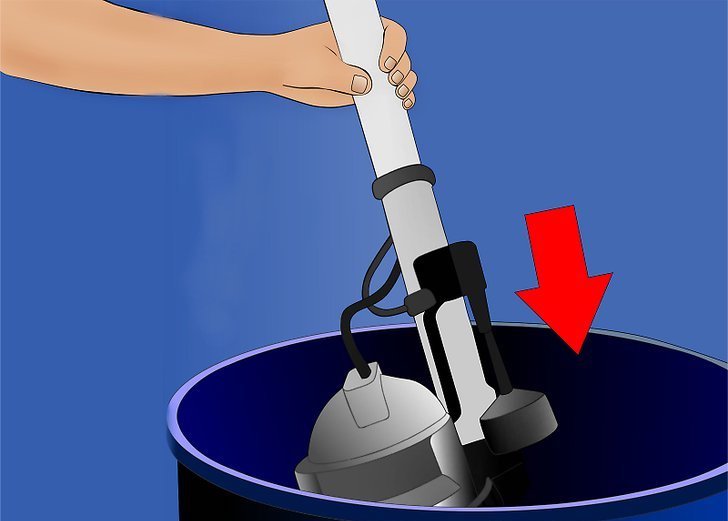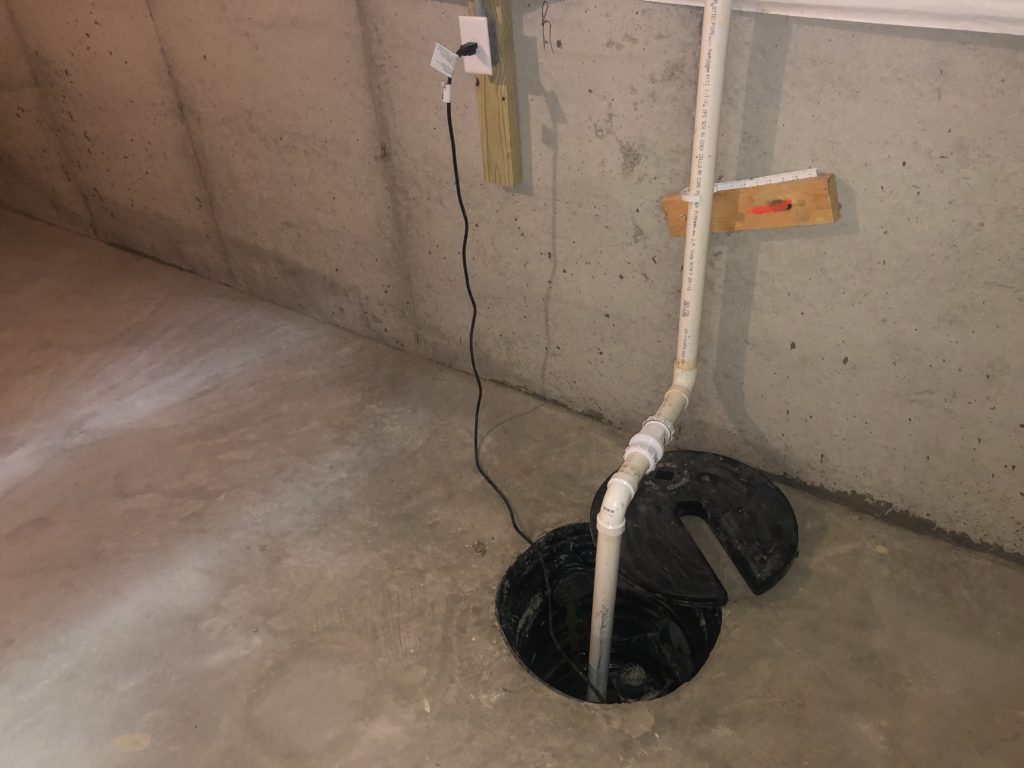Swift Steps to Maintaining Your Sump Pump
Swift Steps to Maintaining Your Sump Pump
Blog Article
What are your beliefs on How To Effectively Clean A Sump Pump?

Sump pumps are vital parts in many homes, especially in areas susceptible to flooding or extreme wetness. They assist stop water damage by effectively getting rid of excess water from basements or crawl spaces. Nevertheless, like any other home appliance, sump pumps require regular upkeep to guarantee they operate properly when required the most. Cleaning your sump pump is a vital part of its maintenance, and understanding exactly how to do it effectively can save you from expensive repair services and possible disasters.
Intro
Keeping a tidy sump pump is crucial for its appropriate performance and long life. Disregarding this necessary task can lead to obstructions, malfunctions, and ultimately, water damages to your building. As a result, learning exactly how to clean up a sump pump is essential for property owners that count on these tools to keep their cellars dry and protected.
Indicators of a Dirty Sump Pump
Understanding when your sump pump needs cleaning is important for stopping possible breakdowns. Some typical signs that indicate a dirty sump pump include unusual noises during procedure, reduced water flow, and visible particles in the pit. If you notice any of these signs and symptoms, it's essential to clean your sump pump immediately to avoid any further problems.
Preparing for Cleansing
Before you start cleaning your sump pump, it's essential to take some security preventative measures. Begin by turning off the power to the pump to prevent any kind of electric crashes. In addition, use appropriate protective equipment, such as gloves and safety glasses, to shield on your own from dust, particles, and possible pathogens.
Understanding the Sump Pump
Prior to diving into the cleaning process, it's necessary to have a basic understanding of how a sump pump functions. Normally mounted in a pit or basin below the basement flooring, a sump pump includes several essential elements, consisting of a pump, a float button, and a discharge pipeline. When water builds up in the pit, the float switch turns on the pump, which after that pumps the water out with the discharge pipe, away from the structure's structure.
Detailed Overview to Cleaning a Sump Pump
Turning off the Power
Begin by separating the power supply to the sump pump to stop any type of crashes while cleaning.
Checking for Proper Functioning
Prior to re-installing the pump, perform a quick test to guarantee that the float switch turns on the pump correctly. Pour some water right into the sump pit and observe the pump's procedure. If whatever is working appropriately, you can rebuild the pump and reconnect the power supply.
Removing Particles and Dust
Utilize a container or an inside story to remove any kind of visible particles, dust, or debris from the sump pit. Dispose of the particles effectively to prevent it from obstructing the pump or the discharge pipeline.
Cleaning the Pump and Float Switch
As soon as the pit is free from particles, thoroughly eliminate the pump from the pit. Check the pump and the float button for any indicators of damage or wear. Utilize a soft brush or fabric to cleanse the surface areas and remove any kind of built up gunk.
Purging the System
After cleansing the pump and float button, purge the sump pit with clean water to eliminate any type of remaining dust or debris. This will certainly help guarantee that the pump operates smoothly and effectively.
Upkeep Tips to Maintain Your Sump Pump Clean
Along with periodic cleaning, there are numerous maintenance ideas you can follow to keep your sump pump in ideal problem:
Conclusion
Cleansing your sump pump is a critical element of its upkeep and makes sure that it operates successfully when you require it the most. By complying with the actions detailed in this overview and integrating routine upkeep into your routine, you can prolong the life expectancy of your sump pump and protect your home from water damages.
6 STEPS ON HOW TO CLEAN A SUMP PUMP PROPERLY
UNDERSTANDING SUMP PUMPS
Your sump pump plays a crucial role in protecting your home by managing and removing excess water. It primarily functions as a “shield”, guarding your basement against the damaging effects of water accumulation. The pump is housed in a sump pit in the lowest part of your basement, and its job is to pump out any water that collects there.
During heavy rainfalls or when snow melts rapidly, water can infiltrate your basement, posing potential risks like flooding, structural damage, and harmful mold growth. Here, the sump pump springs into action, pumping out the intruding water and directing it away from your home.
SAFETY FIRST
Before cleaning, remember to prioritize safety. Disconnect the sump pump from the power source to prevent any accidental electric shocks. Also, wear sturdy gloves to protect your hands from any sharp or dirty components within the pump.
REMOVE THE SUMP PUMP
After ensuring your safety, the next step is to remove the sump pump from its pit. Doing this might require careful maneuvering as you don’t want to damage any pump components. Once removed, clean the sump pit to remove any accumulated debris or sludge.
INSPECT THE PUMP
Inspect the pump for any visible signs of wear or damage. Check the power cord, float switch, and impeller housing. If any components look worn out or damaged, consider replacing them to ensure optimal performance.
CLEAN THE PUMP
Thoroughly clean the pump with warm, soapy water. Make sure to rid it of any dirt, gravel, or other debris that might impede its performance. You can use a toothbrush to clean the small, hard-to-reach parts of the pump.
REINSTALL THE SUMP PUMP
Reinstall the pump into the sump pit Make sure it’s positioned correctly to remove the water effectively Once it’s back in place, reconnect it to the power source TEST THE PUMP
Finally, pour some water into the pit to ensure the pump works correctly. It should start automatically and begin pumping out the water; if it doesn’t, check the power source and the positioning of the pump.
Remember, while cleaning your sump pump is an essential part of home maintenance, hiring a professional plumber for a thorough inspection and cleaning at least once a year is also important. This will ensure that your pump is in optimal condition, ready to protect your home from potential water damage.
BEST PRACTICES FOR CLEANING SUMP PUMP DISCHARGE PIPES
Regular Inspection: Regularly inspect your discharge pipes, especially during heavy rainfall or snowmelt periods. Look for any signs of blockage or damage. Early detection of problems can prevent serious issues down the line. Periodic Cleaning: Over time, sediment and debris can accumulate in the discharge pipes, impeding the flow of water. Regular cleaning helps keep the pipes clear and functioning efficiently. You can use a high-pressure water jet to effectively clean the pipes. Insulation During Winter: In colder climates, discharge pipes can freeze, blocking the outflow of water. Protect your discharge pipes from freezing temperatures by insulating them with foam pipe insulation. This will ensure the sump pump can continue to discharge water even in freezing conditions. Proper Positioning: The discharge pipe should be positioned to direct water away from your home’s foundation. Improper positioning can lead to water seeping back into the basement. Ensure the pipe is long enough and angled correctly. Installation of a Check Valve: A check valve prevents water from flowing back into your sump pit after the pump has pushed it out. Installing a check valve helps maintain the efficiency of your sump pump and reduces the risk of flooding. Minimize Pipe Turns: Every curve or turn in the discharge pipe can decrease the efficiency of water flow. By minimizing turns and bends in your discharge pipe, you can increase the efficiency of your sump pump. https://www.fullspeedplumbing.com/how-to-clean-a-sump-pump-properly9999/

I'm just very taken with and I hope you appreciated my blog entry. Liked our write-up? Please quickly share it. Help others discover it. We value your readership.
Call Today Report this page